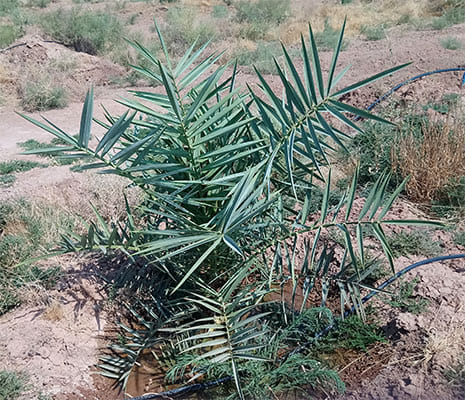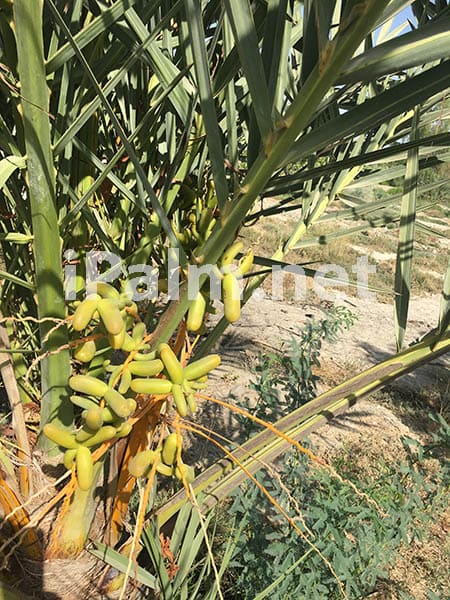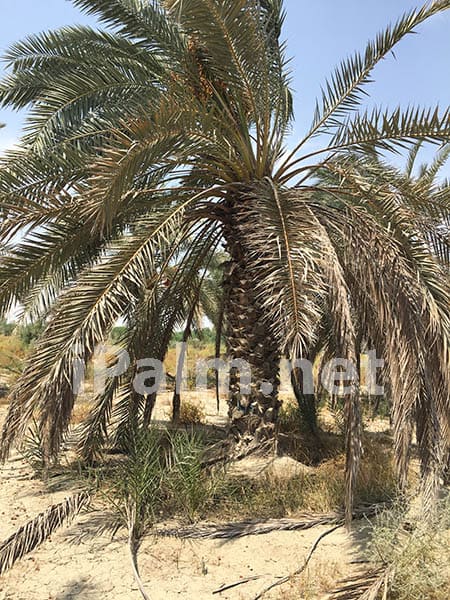Genetic mutations in tissue cultured Date palm: Identification and Implications
Introduction to Tissue Culture and Genetic Mutations in Date Palm
Tissue culture is an advanced technique in plant biotechnology that enables researchers to generate new plants from small tissue sections or individual cells. The date palm (Phoenix dactylifera), a significant agricultural species in arid and semi-arid regions, uses this technique for the propagation and improvement of new varieties. However, one issue that may arise during the tissue culture and propagation process is the occurrence of genetic mutations in the produced seedlings. Adhering to correct production principles and identifying the signs of genetic mutations, commonly referred to as genetic abnormalities in date palms in Iran, can significantly reduce the associated heavy losses. Date Palm Tissue Culture Mutations

Causes of Genetic Mutations in Date Palm Tissue Culture Plants
Genetic mutations in date palm tissue culture plants can occur for several reasons:
- Environmental and Physical Conditions: Environmental factors such as temperature, humidity, and light during tissue culture can influence the genetic behavior of plants. Temperature fluctuations or high humidity levels may induce unwanted changes in the DNA structure.
- Chemical and Hormonal Agents: Specific chemical agents and plant hormones, used for cell proliferation and growth in tissue culture, may have mutagenic effects, leading to genetic alterations. For instance, plant hormones like 2,4-D directly and others such as NAA and IBA indirectly may cause genetic mutations.
- Repeated Subculturing: Excessive repeated subculturing is one factor that can lead to genetic abnormalities in date palms and many other plants grown by tissue culture.
- Genetic Reconstitution from Long-term Storage: Long-term storage of genetic material followed by tissue culture of new plants can cause frequent DNA replication and repair, leading to a higher likelihood of genetic mutations over time.
- Cell Transfer Processes: During tissue culture, transferring plant cells to different culture environments may subject them to various pressures, causing genetic instability and DNA mutations.
Symptoms of Mutated Date Palm plants
Date palm plants produced through tissue culture that undergo genetic mutations may exhibit characteristics differing from natural and healthy saplings. These indicators include:
- Abnormal Growth: Mutated saplings may exhibit abnormal growth rates, either faster or slower than usual.
- Morphological Changes: Genetic mutations may cause visible changes, such as larger or smaller leaves, unexplained yellowing, or altered fruit shape and size.
- Increased Resistance: In some cases, genetic mutations can enhance resistance to diseases, pests, or environmental conditions like drought or cold.
- Reproductive Abnormalities: Genetic mutations can sometimes result in reproductive anomalies, affecting flowering patterns or the production of normal, viable fruits.
Date Palm Tissue Culture Mutations

Genetic and Epigenetic Mutations in Date Palm
In plants, including date palm, mutations (referred to as genetic abnormalities) are classified into two main categories:
- Genetic Mutations: These involve changes in the DNA sequence, resulting in permanent alterations in the plant’s genetic traits. In date palms, such mutations can include deletions, insertions, or nucleotide sequence changes, potentially leading to novel traits like dwarfism, deformities, altered growth patterns, or different flowering structures.
- Epigenetic Mutations: These involve changes in gene expression due to structural modifications in DNA or related proteins, often triggered by environmental factors like temperature, chemicals, or physical stresses. In date palms, epigenetic mutations can cause temporary physiological changes, such as increased or decreased growth rates and altered stress resistance.
Challenges of Genetic Mutations in Date Palm Tissue Culture
Genetic mutations in date palm tissue culture introduce challenges that may adversely affect the production and improvement of date palms:
- Genetic Instability: One of the biggest challenges is the genetic instability of mutated plants. Genetic changes may result in traits that do not persist in subsequent generations, yielding suboptimal long-term results.
- Uncontrolled Growth: In some cases, genetic mutations may lead to uncontrolled growth or the production of plants with undesirable traits that cannot thrive in natural or commercial environments.
- High Costs: Mutated date palm plants may reveal abnormalities several years after planting, imposing significant long-term planting and maintenance costs on farmers.
- Environmental and Ethical Concerns: Using genetic mutations in tissue culture may raise environmental and ethical concerns, especially if unintended genetic changes impact natural ecosystems or reduce biodiversity.

Conclusion for Date Palm Tissue Culture Mutations
Genetic mutations in date palm saplings produced via tissue culture present challenges and risks that must be carefully managed. Factors such as production technology, high-quality chemical and laboratory materials, and environmental conditions can induce genetic changes that may lead to undesirable traits. These types of genetic mutations have been observed much less frequently in date palm offshoots.
Resources
- Date Palm Biotechnology and Propagation
-
- Al-Bashir, B., & Al-Khayri, J. M. (2020). “Date palm biotechnology: Current status and future perspectives.” In: Date Palm Biotechnology. Springer, Cham.
- ISBN: 978-3-030-30542-7
- Genetic Improvements in Date Palms
- Zaid, A., & R. Djerbi. (2005). Date Palm Cultivation. FAO Plant Production and Protection Paper No. 156. FAO, Rome.
- ISBN: 9251052686
- Hormonal and Genetic Regulation of Flowering in Date Palm
- Al-Shahrani, H. M., & D. D. Reid. (2019). “Hormonal regulation of flowering in date palms.” Scientia Horticulturae, ۲۵۳, ۱۱۹-۱۲۶.
- DOI: 10.1016/j.scienta.2019.05.003
- Impact of Environmental Factors on Pollination in Date Palms
- Aly, M. A., & F. A. El-Keblawy. (2022). “Impact of environmental factors on pollination and fruit set in date palms.” Agronomy Journal, ۱۱۴(۷), ۱۸۲۹-۱۸۳۷.
- DOI: 10.1002/agj2.20631
- Genetic Mutations and Flowering in Date Palms
- Al-Musa, A. M., & N. A. Badr. (2020). “Genetic mutations affecting flowering and pollination in date palms.” Plant Molecular Biology Reports, ۳۸(۶), ۹۸۱-۹۸۸.
- DOI: 10.1007/s11105-020-01294-4
- In collaboration by Agrinet Solutions
